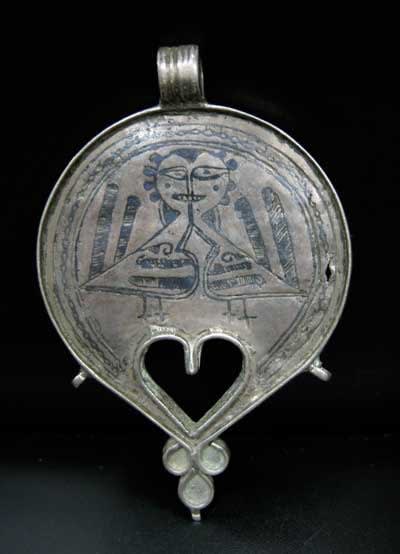Seljuk Silver Pendant, 1100 CE - 1300 CE
Silver
2.15 x 3.25
OS.254
In the 9th century, hordes of nomadic Turkic horseman living on the outskirts of the Muslim world began to migrate westward into the heart of Central Asia. By the 10...
In the 9th century, hordes of nomadic Turkic horseman living on the outskirts of the Muslim world began to migrate westward into the heart of Central Asia. By the 10 century, a branch known as the House of Seljuk, arrived into mainland Persia, and settled in the province of Khurasan. Overtime, the Seljuks converted to Islam and began to adopt the Persian language and culture. The arts thrived during the Seljuk period as the Turkic rulers patronized Persian culture, arts, and literature.
The pendant is in the shape of a tear-drop with a heart cut out at the bottom. The decoration consists of an incised harpy with two bird bodies. The harpy was a common motif used on Seljuk decorative arts.
It was believed that the human headed bird carried the deceased in Seljuk Anatolia, into the afterlife. They were also used as symbols against evil.
The pendant is in the shape of a tear-drop with a heart cut out at the bottom. The decoration consists of an incised harpy with two bird bodies. The harpy was a common motif used on Seljuk decorative arts.
It was believed that the human headed bird carried the deceased in Seljuk Anatolia, into the afterlife. They were also used as symbols against evil.
